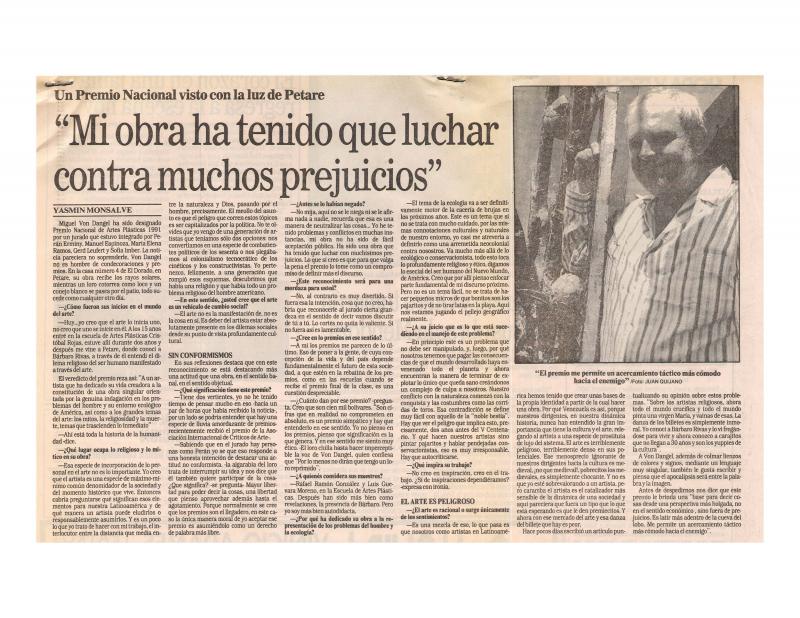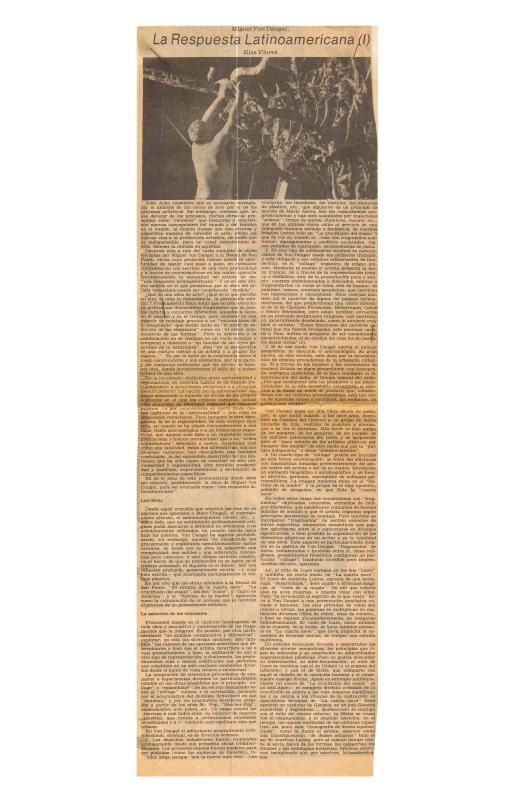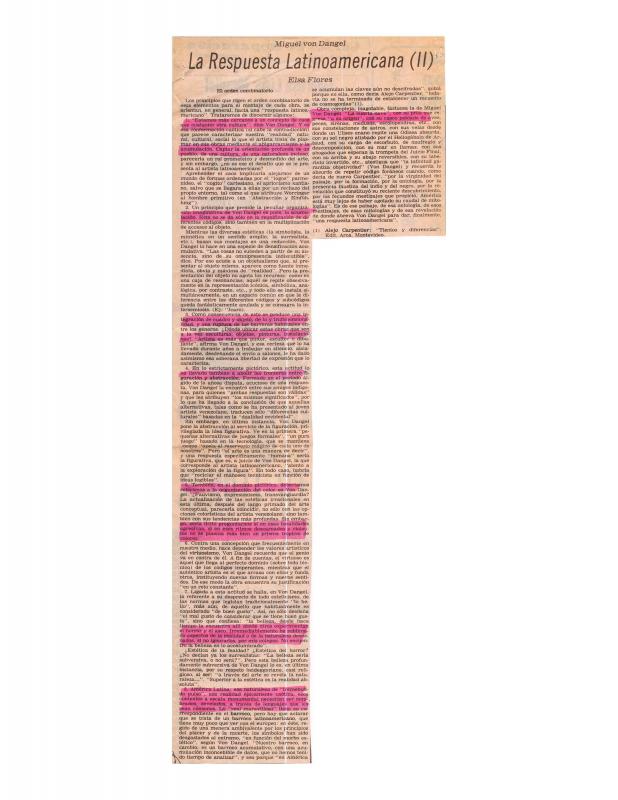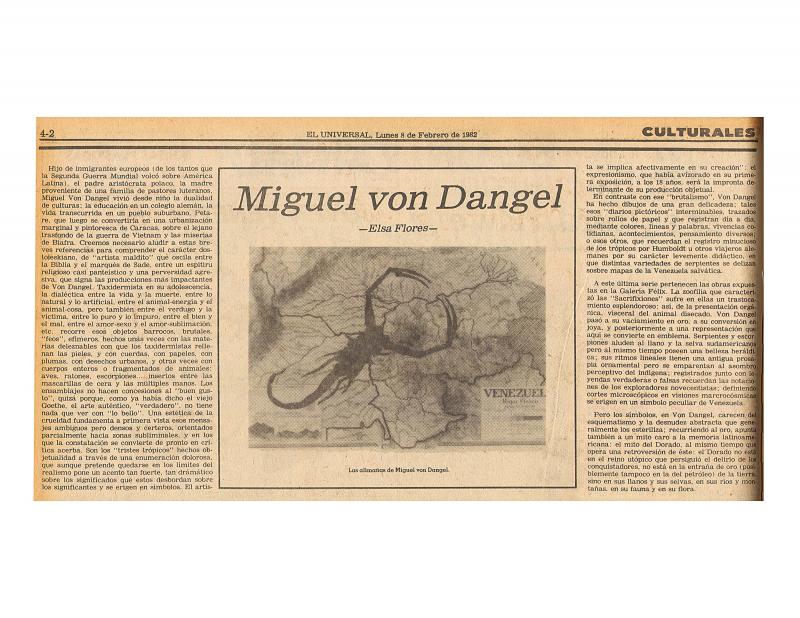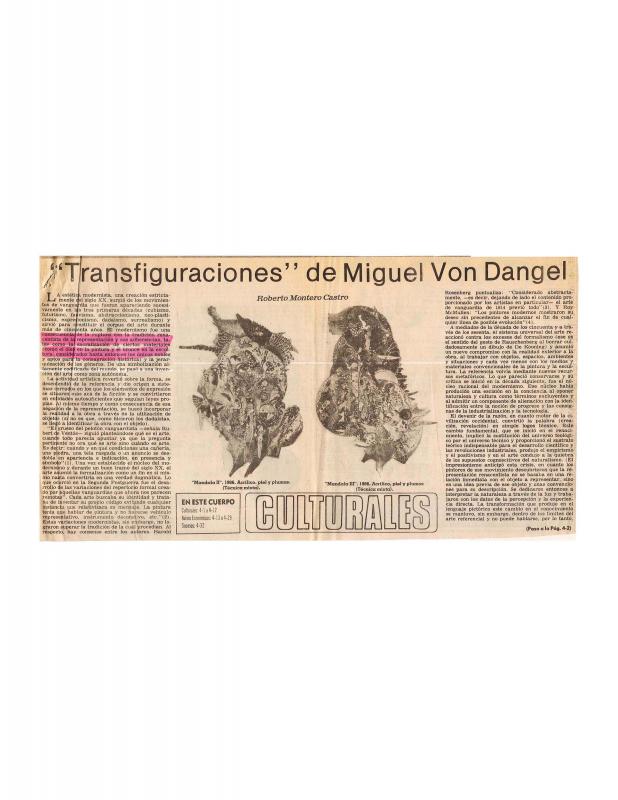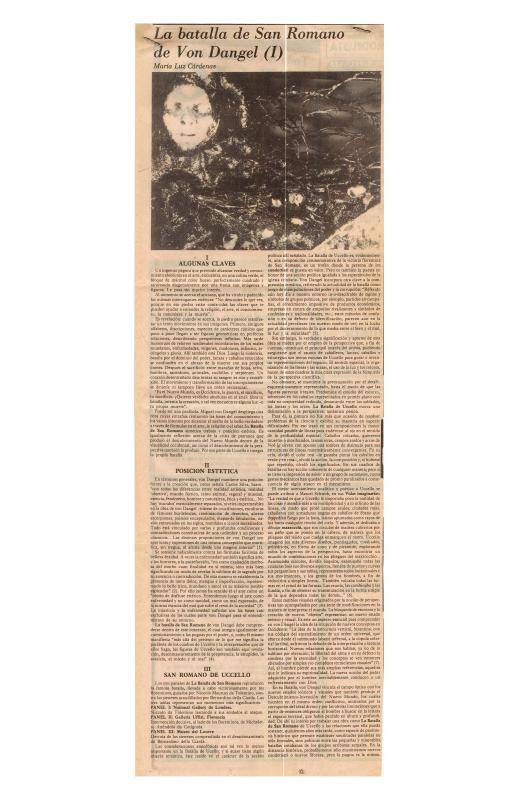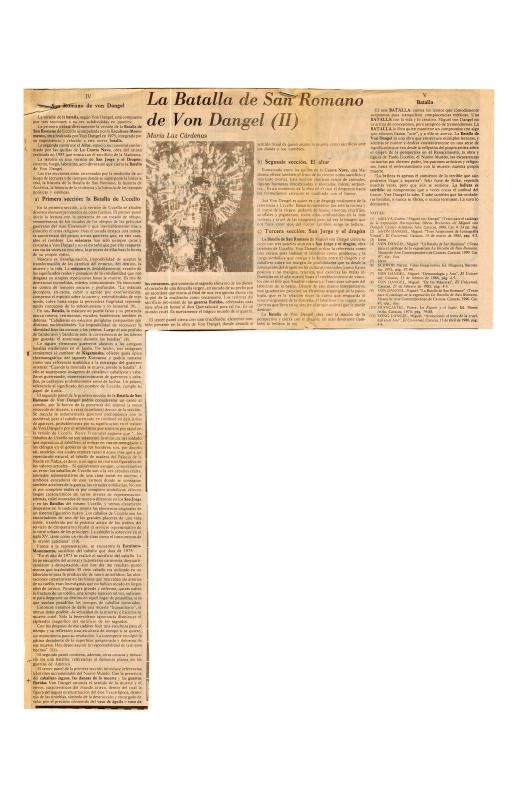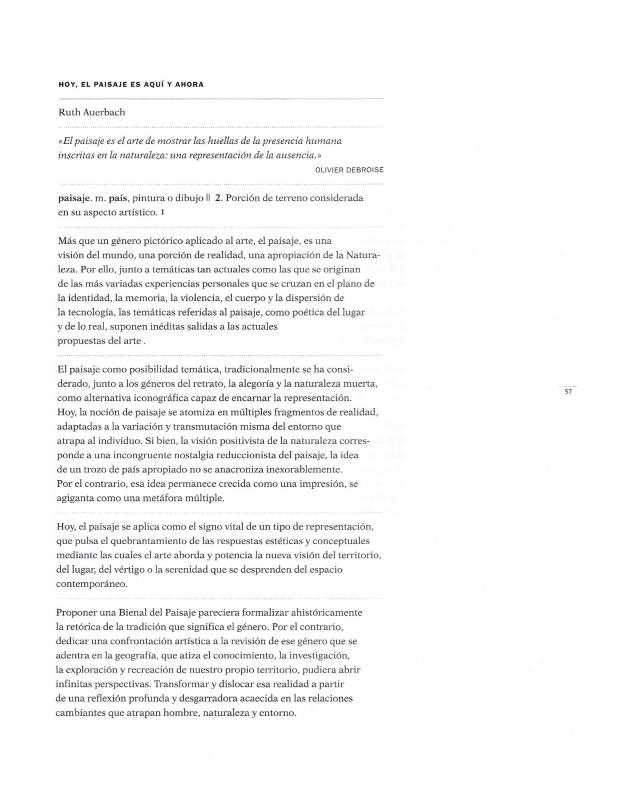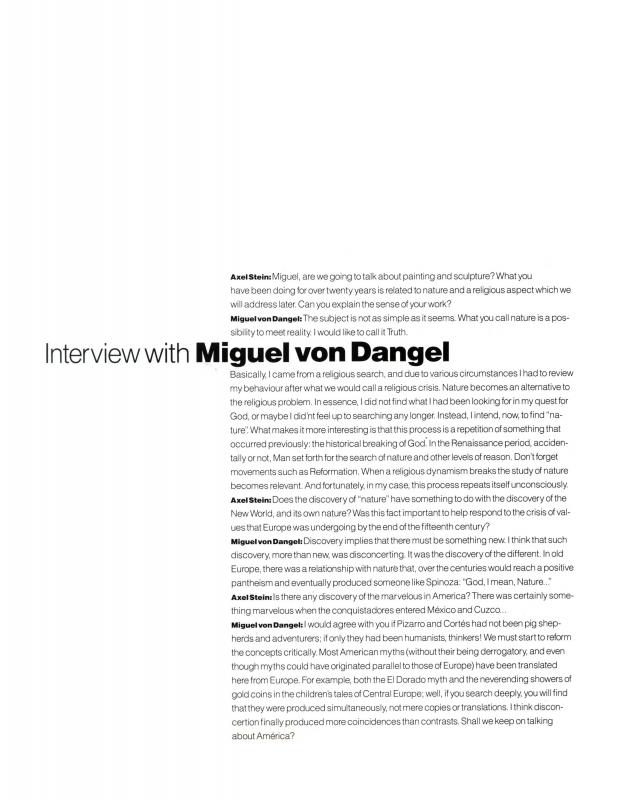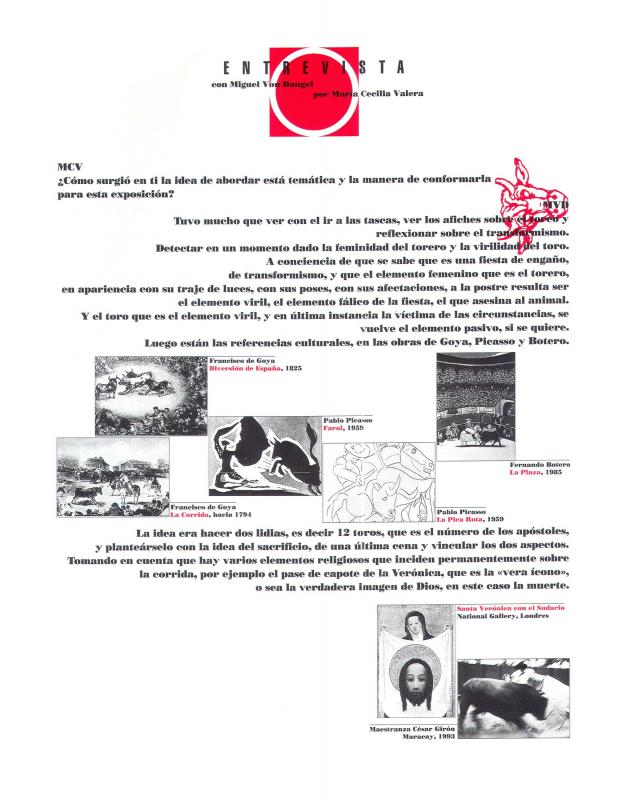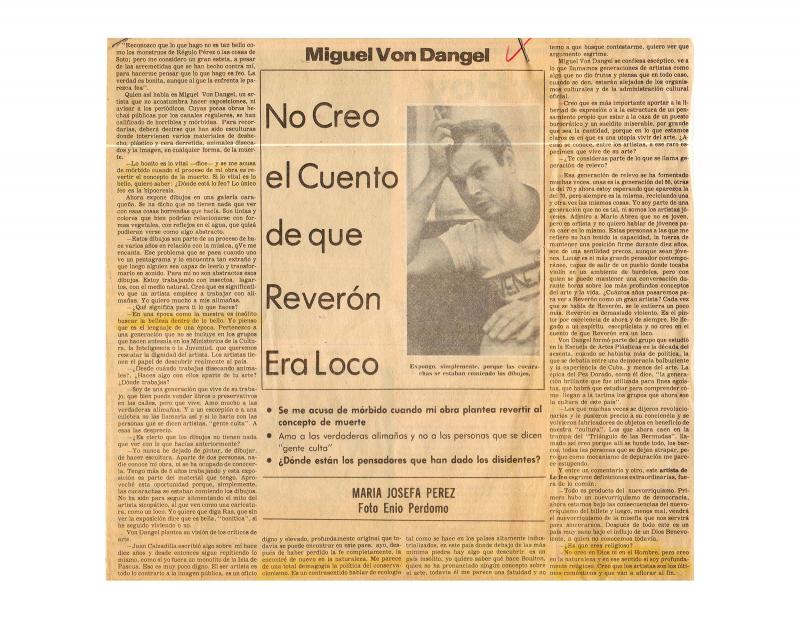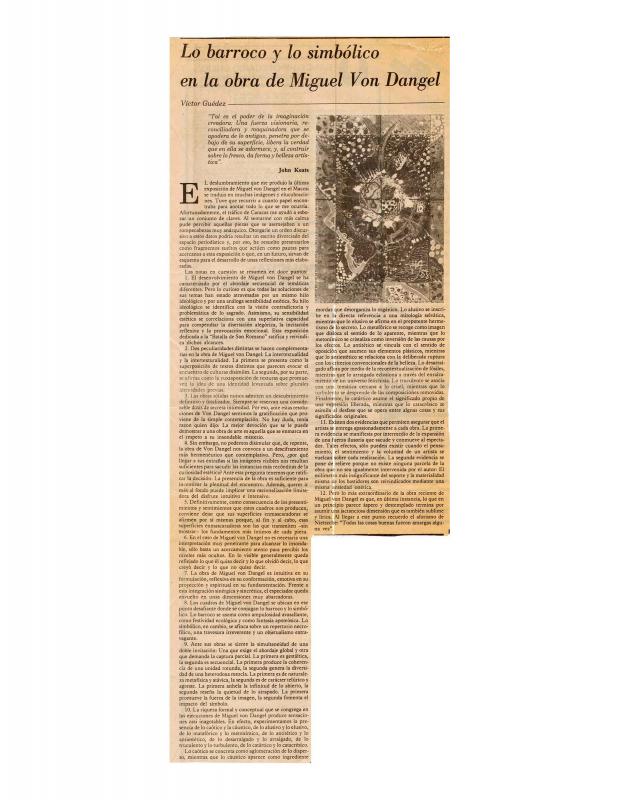The Venezuelan visual artist born in Germany, Miguel von Dangel (b. 1946), gave this speech in Fort-de-France, on the Antillean island of Martinique on July 11, 1991, in connection with an exhibition of his works. These works, Laberintos de la piel, were inspired by the fabrics or molas of the Kuna Indians who live in the San Blas Archipelago, whose boundary is between Colombia and the Panamanian Caribbean. As the story is told, when the Catholic conquistadors prohibited nudity, the Indians transferred their body painting to fabric, garments and household goods. In Dangel’s opinion, that was a redeeming response to both intolerance and censorship that ended up fostering art. That is why he attributes so much importance to the artist’s social role. This story is a metaphor whose main function is to symbolize what von Dangel was seeking and expressing through his essay. He regards the critical examination of Latin American roots as the key to the formation of a “true identity,” a path shared by this immigrant artist who had to build his own identity as a Latin American. For Dangel, this was a hard-won achievement, involving multiple obstacles: an identity constructed while maintaining the rich mestizaje of his own cultural heritage. Perhaps it is his own situation as an immigrant, with that initial distance, that allows him to study Latin American identity with intellectual objectivity. In other words, in addressing this problem, he ends up revealing his own fantasies and utopias of all kinds (racial, political, religious and historical), as expressed in this speech. [For other critical texts on his work, see the ICAA digital archive: by Yasmin Monsalve “Mi obra ha tenido que luchar contra muchos prejuicios: Un premio nacional visto con la luz de Petare” (doc. no. 1102125); three texts by Elsa Flores: “Miguel von Dangel: La respuesta latinoamericana (I)” (doc. no. 1155150), “Miguel von Dangel: La respuesta latinoamericana (III)” (doc. no. 1154906) and “Miguel von Dangel” (doc. no. 1056044); by Roberto Montero Castro “Transfiguraciones de Miguel von Dangel” (doc. no.1153996); two essays by María Luz Cárdenas, “La Batalla de San Romano de von Dangel (I) (doc. no. 1154028) and “La Batalla de San Romano de von Dangel (II)” (doc. no. 1154092); by Ruth Auerbach “Hoy, el paisaje es aquí y ahora” (doc. no. 855314); by Axel Stein “Interview with Miguel von Dangel” (doc. no. 1102348); by María Valera, “Entrevista con Miguel von Dangel” (doc. no. 1154060); one by María Josefa Pérez “Miguel von Dangel: No creo el cuento de que Reverón era loco” (doc. no. 1154012); and finally, an article by Víctor Guédez “Lo barroco y lo simbólico en la obra de Miguel von Dangel” (doc. no. 1154124)].

